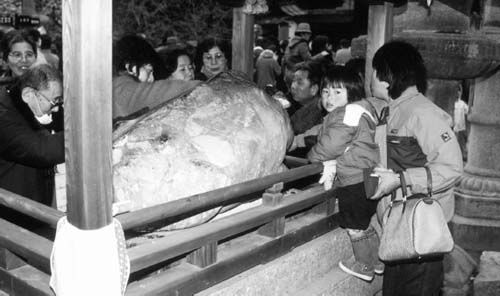ShintoHolidays and Regular Observances |
Are there cyclical Shinto observances, such as feasts that happen regularly but not annually? |
Some gatherings still take place on set days in certain odd-numbered months, but not monthly. For example, a practice called Waiting for the Sun (himachi) finds people gathered in private residences on the fifteenth day of the first, fifth, and ninth lunar months to keep vigil until dawn. A Shinto priest is often among the celebrants. During the same months, but on the odd-numbered nights of the third week, people come together in “Groups Awaiting the Moon” (tsukimachi). September’s full moon is especially beautiful, for it falls in the ninth month and is known as the harvest moon. Participants celebrate the lunar beauty with songs and food. These gatherings occur only in homes. Some people still make arrangements to observe their “unlucky year”—age forty-two for men and thirty-three for women—with rites at a shrine to ward off misfortune. They may take precautions by means of extra rituals of purification on that day. Some regard certain days each month as “fortuitous connection days” because they associate them with particular kami, and such days often occasion shrine visitation.

At Kyoto’s Kitano Tenjin shrine, worshippers revere a large marble effigy of a sacred bull that is the symbol of the kami Sugawara Michizane.
